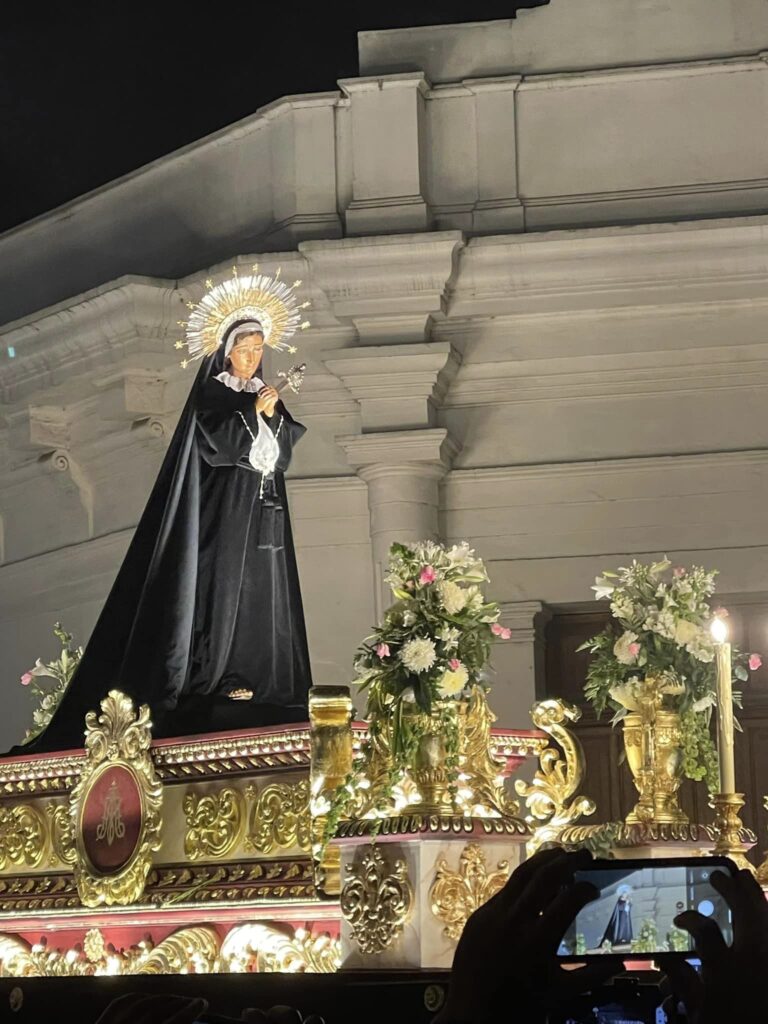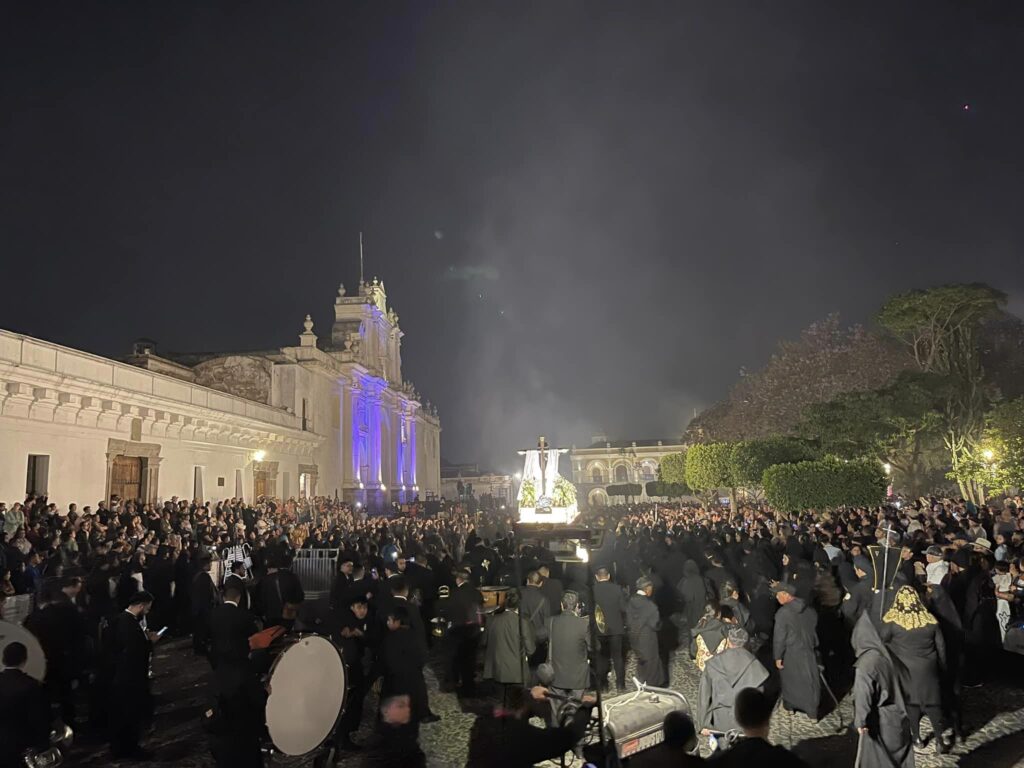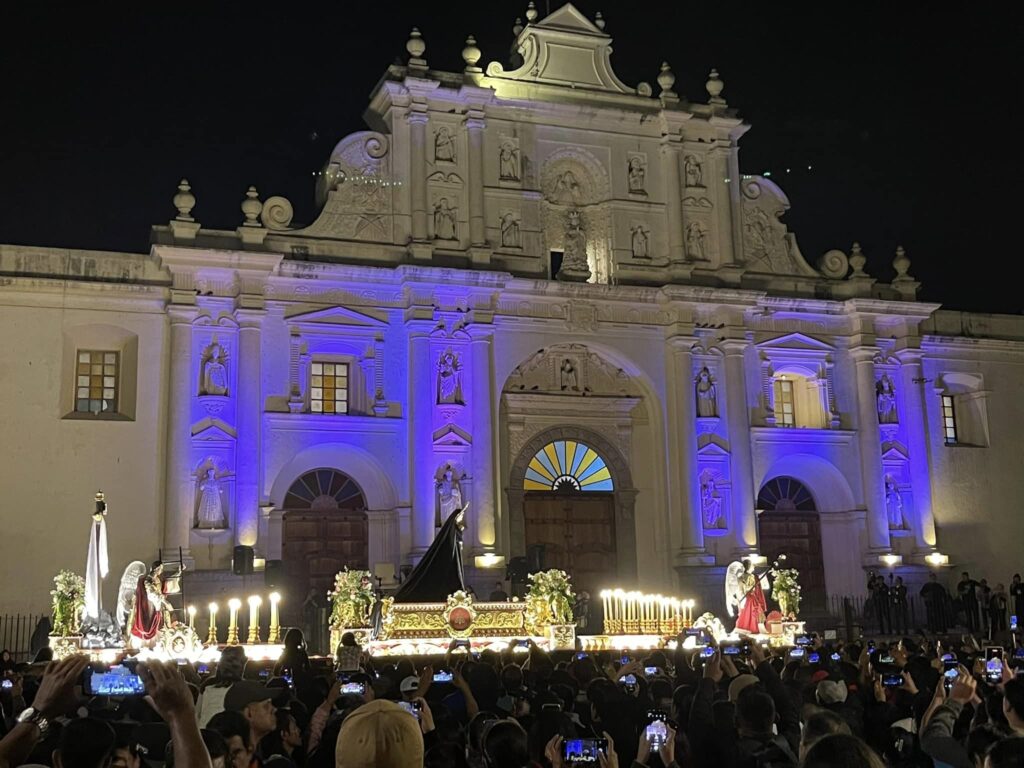Semana Santa 2024 continued
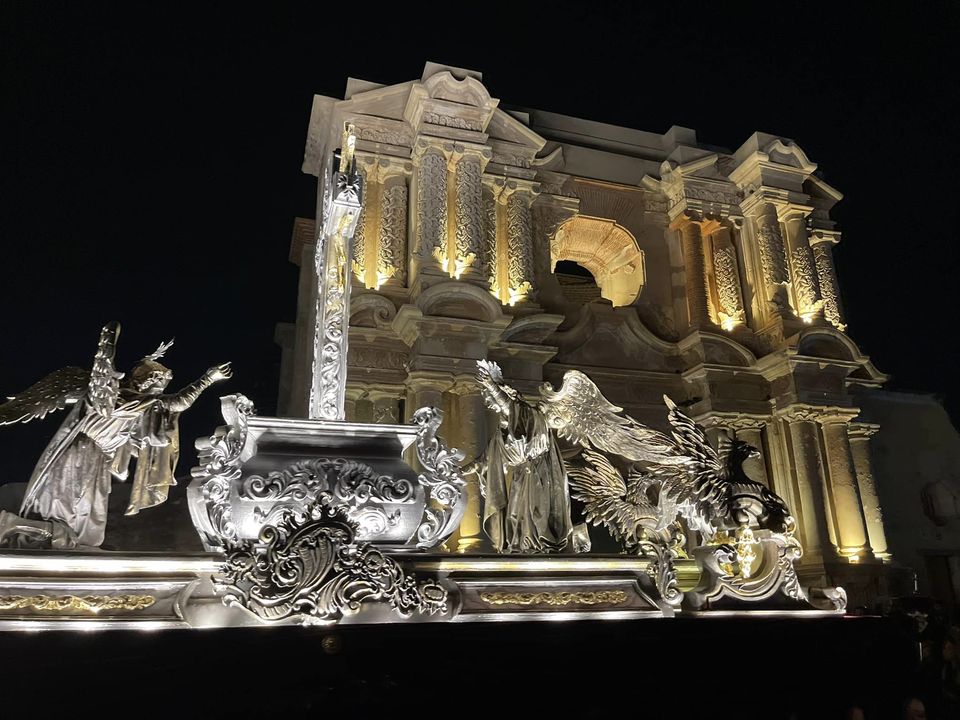
The tradition of building carpets or rugs (alfombras) during Lent was brought to Guatemala from Spain in the 1500s. In the centuries since then, the practice in Guatemala has been elevated to an art form. Carpets are built using stencils or creating designs freehand, with materials that include dyed sawdust, pine needles, palm branches and seeds, flowers, fruits, and vegetables. We saw one rug in front of the tipica market at El Carmen decorated with placemats, purses, dolls and toys—a fanciful nod to the objects sold beside the famous ruins.
Carpets can take hours and hours to construct, with teams working around the clock ahead of a scheduled procession. In Antigua, I began to regard myself as a “carpet chaser”: In the same way “storm chasers” track tornadoes, I trod the cobblestone streets of Antigua in search of carpets, each creative and spectacular.
Processions occur at all hours, down nearly every street in Antigua, with dozens or hundreds or thousands of people participating. Although we planned most of our procession-watching, sometimes we’d be out and the smell of incense tipped us off that a procession was approaching. Sometimes, it was the sound of drumbeats and tubas. On Saturday, we finished watching our last procession of Mary through the Square at about ten p.m. Five hours later, at 3 a.m., the blare of trumpets outside our door announced another procession was passing and would continue until dawn.
As magnificent as the carpets are, they’re built to be temporary. We saw artisans finish their work literally moments before the procession arrived and walked through it. Close behind the end of the procession comes the clean-up crew, erasing any evidence of the hours, days, weeks and months of planning and labor.
I can’t think of anything in the United States to compare to the season of Lent and Holy Week in Guatemala. No combination of tradition, faith, and artistic expression comes close.
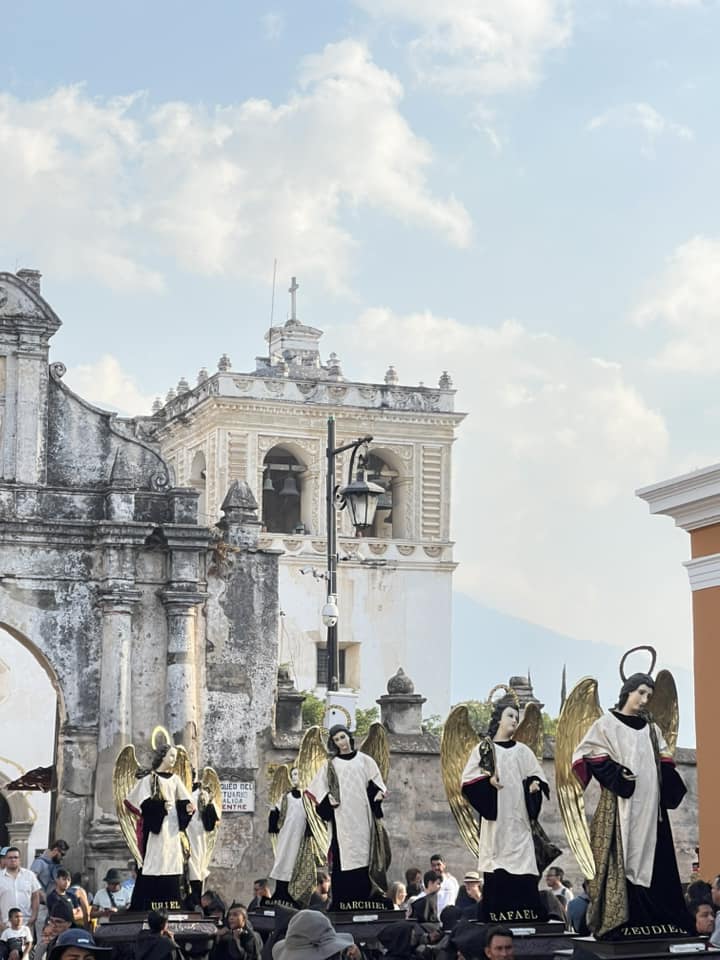

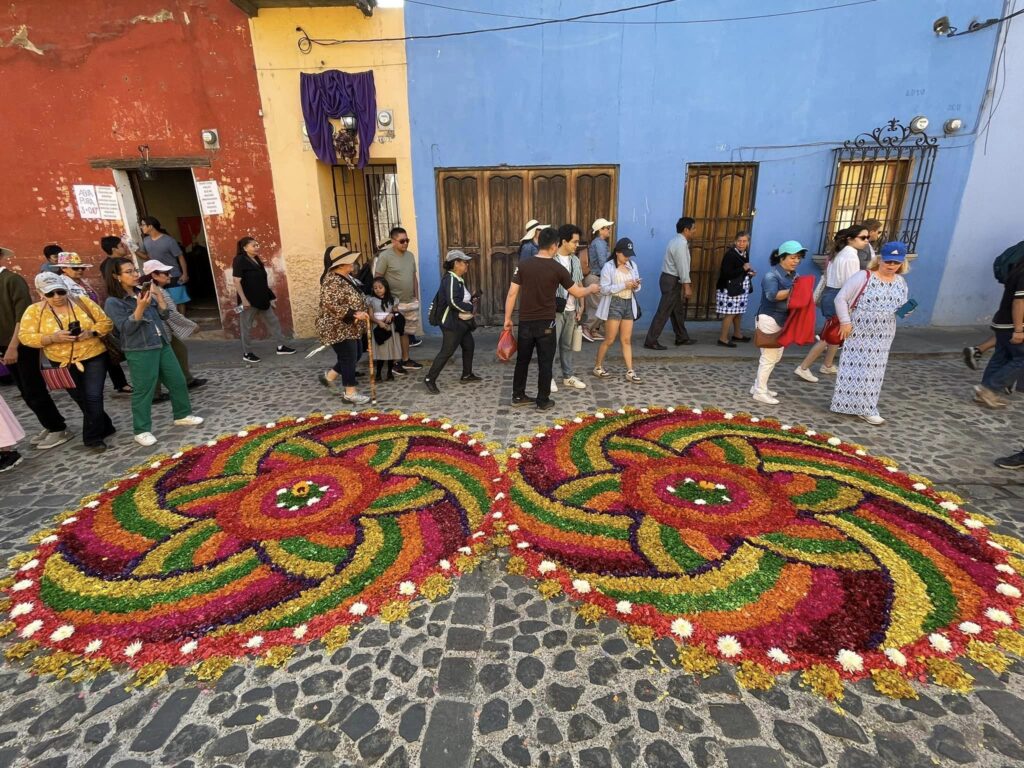
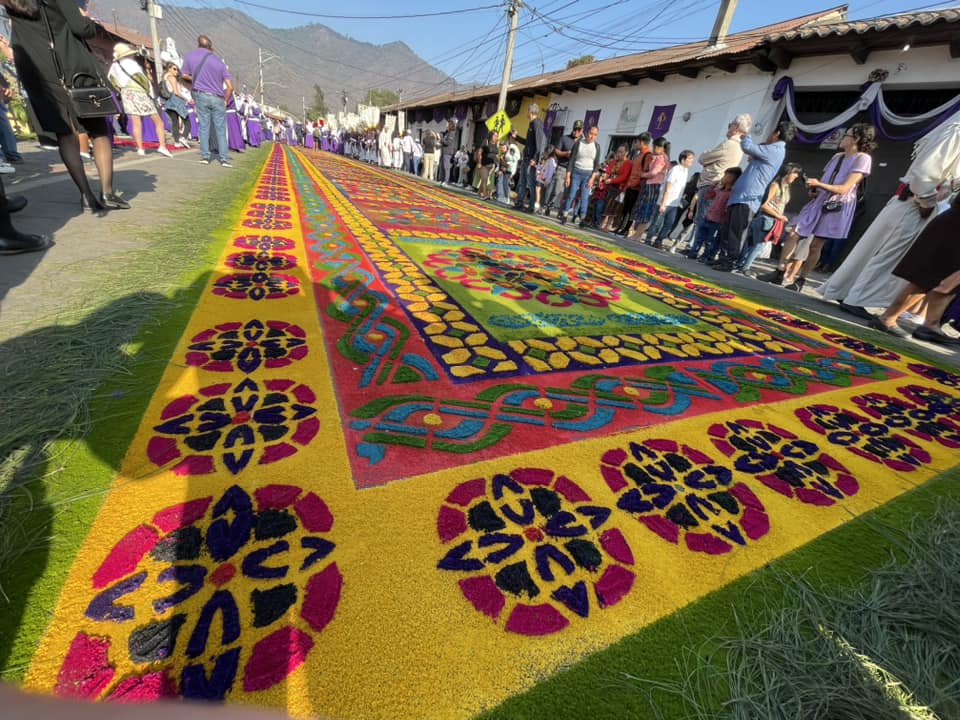
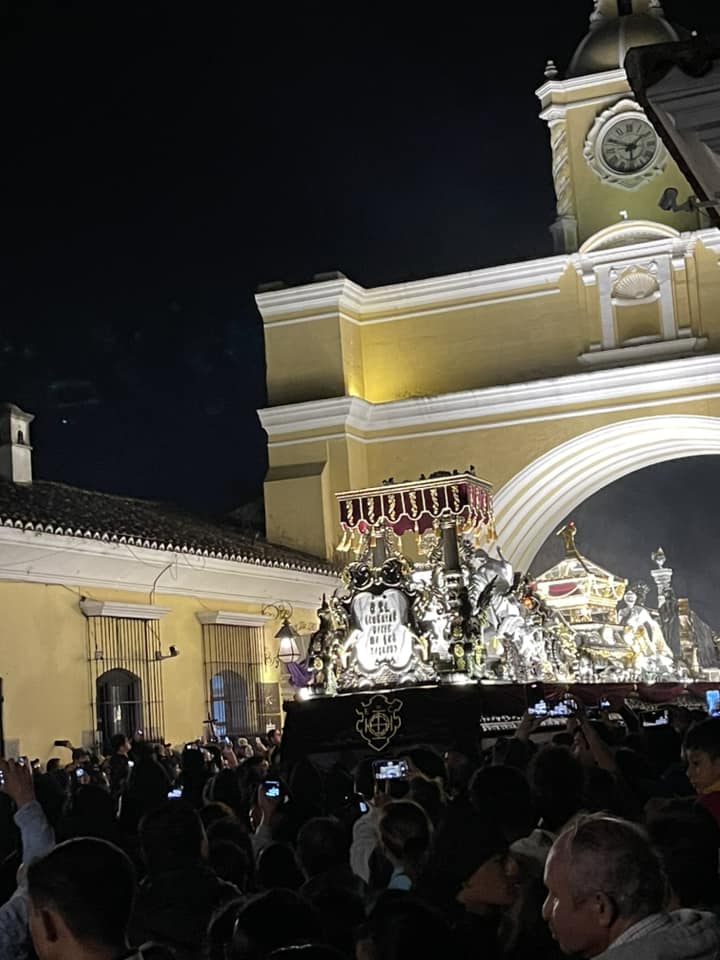

Semana Santa 2024 continued Read More »
